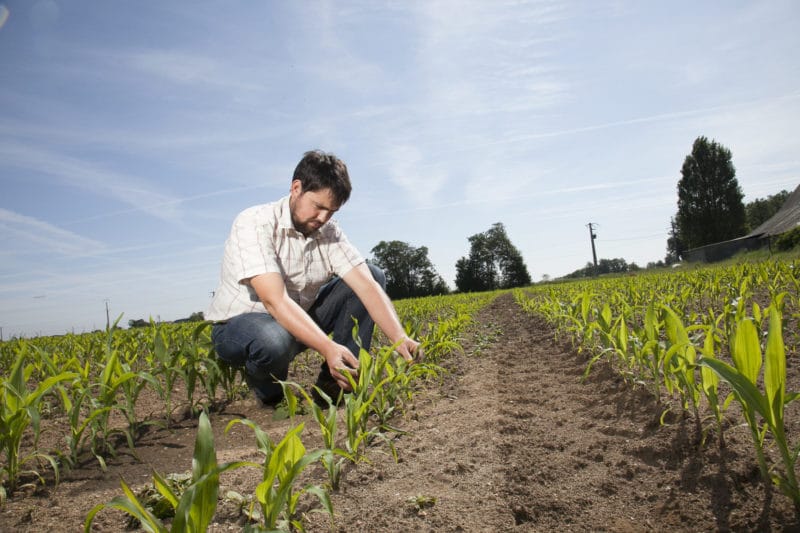
Crop Protection – Plant bugs
The purpose of maize pest control is to secure the crop’s yield potential whilst preserving the optimum number of plants per hectare, and to protect the integrity of each plant, especially in case of early attacks.
Note: Pest harmfulness is often underestimated. It can be crippling to yields, especially when planting densities are low – at which point, every single plant makes a difference. This is particularly true for seed-attacking pests (Corvidae birds) and parasites that damage young maize (wireworms, nematodes, garden symphylan, Western corn rootworm, Noctuid pests etc).
Treatments during crop development and at the end of the crop cycle (especially against borers) are used to limit mechanical yield losses (caused by stalk breakage or ears dropping to the ground) and to reduce the risks of the crop losing its sanitary quality.
Observe Before Taking Action
There are several types of pests that are likely to damage a maize crop significantly. The frequency and harmfulness of the pest depend on factors like geographic area, agronomy, soil, and climate.
Maize pest control has to rely on careful planning. Thus, one should:
- observe symptoms,
- identify the pest in question,
- be aware of the factors that favour the development of the various pests and spot the harmful thresholds for the crop (they may vary depending on the crop’s intended use),
- if possible, apply suitable phytopharmaceutical treatments during crop development,
- between two production cycles, take the best preventive measures needed to avoid favouring pest development during the following year.

Methods of Pest Control
- Chemical
Within the span of a few years, pest control has moved from a strategy based on broadcast soil treatments to a row-focused protection method (localised application of microgranules), and on to seedling protection (through seed treatments). As of now, the primary control method is genetics.
This precise targeting on the plant’s immediate ecosystem considerably reduces the environmental impact of the products and decreases the amount of active ingredients needed per hectare. Less polyvalent and powerful than they used to be, the active ingredients are compensated by the hybrids’ resistance, obtained through breeding. So despite its lower impact upon insect populations, chemical control remains an indispensable tool to manage pest pressure.
Moreover, the ongoing progress made through data accumulation (Big Data) and the real-time processing thereof open up the prospect of targeting treatments ever so precisely and accurately in order to control maize diseases.
- Agronomics
Climate-related developments (as the global warming alters the dynamics of insect populations – especially those of Noctuid pests) and the changing cultivation methods (especially the avoidance strategies) and technical itineraries influence the incidence and harmfulness of pests.
All methods favouring fast emergence and rapid crop establishment are beneficial (good soil preparation and/or starter application), as they limit the length of exposure to pests – especially to root-attacking ones (Scutigerella spp., Western corn rootworm larvae, nematodes, etc). Choosing hybrids that have good early vigour and are able to (partly) compensate density losses can be useful. Cold weather and hydromorphic soils, which slow down emergence, increase the risks of pest damage.
Except for the Western corn rootworm, monoculture does not particularly favour pest multiplication. Several large areas of maize belonging to the same production region will favour the multiplication of pests that feed on maize, such as the Western corn rootworm, yet at the same time they limit transfers of parasites from other crops, such as aphids. Nevertheless, one must not overlook controlling parasites left from previous crops.
Risk Factors
- In some cases, simplified soil preparations (fewer passes, no-till systems), seed drilling or localised tillage can favour the proliferation of pests that are less vulnerable to soil disturbance. This is caused by the grower’s failure to bury the residues from the previous crop and thus turning them into additional vermin sources by providing burrowing places to parasites such as borers and slugs.
- Repeated use of some chemical families may speed up the biodegradation of these products through the action of specialised flora. Good agronomic practice should consist in varying the ways of action.
- Poor weed control can also increase risks indirectly; thus, certain parasites (e.g. defoliating Noctuidae) will enter crops by first attacking the weeds that grow along field edges.
- Plantings set too far apart from one another within the same area will successively expose crops of all stages to airborne pests and lengthen the risky exposure time, especially when the pest’s way of attacking or its reproductive behaviour depends upon a specific crop stage.